Trend analysis is to find patterns in data, such as ups & downs. A “trend” is an upwards or downwards shift in a data set over time. In retail, this analysis of past trends in sales or revenue; allows to predict the future market. This analysis useful for budgeting and forecasting. Total sales of any business on a trend line may obtain some significant information.
Data set used in this analysis: sales by merchandise line (product category) from the year 1999 to 2015 ( Data Source ).
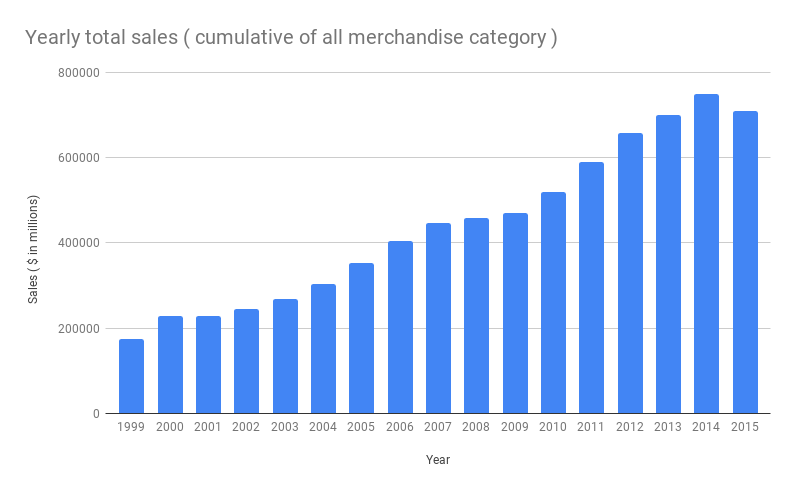 Sales trend analysis also helps to determine are we meeting our sales goals. it provides easy, measurable way to track our progress. it will actually inform the increase in sales at what percentage from last year or over the year.
Sales trend analysis also helps to determine are we meeting our sales goals. it provides easy, measurable way to track our progress. it will actually inform the increase in sales at what percentage from last year or over the year.
Yearly growth percentage of total sales Illustrations 1
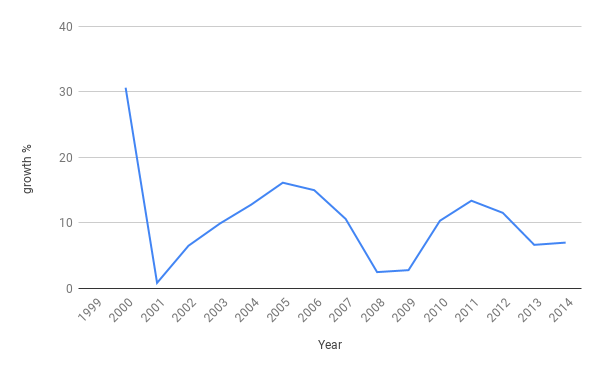 Comparing sales amount and growth% from the year 1999 - 2015, sale amount growth is continuous. But when we compare with growth% we can find the exact trend insights like actual growth and decline from up trends & down trends.
Comparing sales amount and growth% from the year 1999 - 2015, sale amount growth is continuous. But when we compare with growth% we can find the exact trend insights like actual growth and decline from up trends & down trends.
Advantages of over all trend analysis
- Mostly used for budgeting and forecasting.
- To determine are we meeting our sales goals.
- Provides easy, measurable way to track our progress.
- Inform the increase in sales at what percentage from last year or over the year.
Sales trend analysis by channel
To find more interesting facts let’s do the sales trend analysis by channel. frequently new sales channels reveal an initial spike in sales as channel usage is fully maximized, after which the sales growth rate will flatten significantly.
Illustrations 2
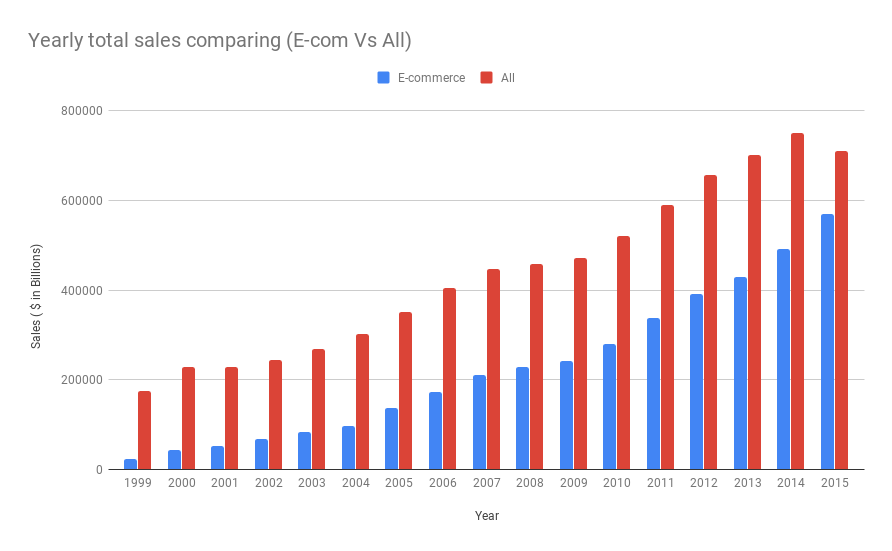 This analysis shows that e-commerce growing very fast and keep growing continuously. This e-commerce sales channel is occupying more than 50% of the sales transaction in the last couple of years.
This analysis shows that e-commerce growing very fast and keep growing continuously. This e-commerce sales channel is occupying more than 50% of the sales transaction in the last couple of years.
Advantages of sales trend analysis by channel
- Find opportunities and potential problems.
- Track a particular channel is increasing or decreasing in sales.
- Take timely decisions such as if you are not into e-commerce till today this may be right time to move.
- Find non performing sales channels
Sales trend analysis by product category
This analysis to spot a universal trend within a product group or to determine how a trend develop over time. This exercise helps identify new opportunities and ideas for concepts or products.
E-commerce sales by product category (Illustrations 3)
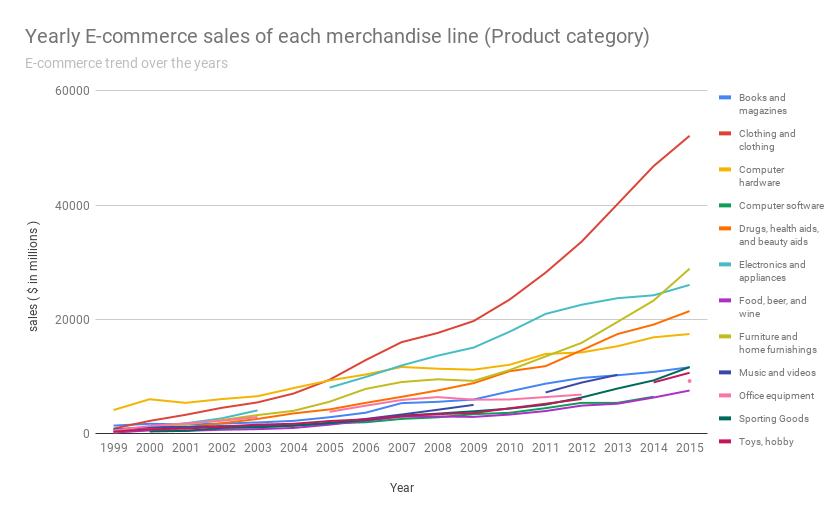
- To deep-dive into the E-commerce sales of product category*
1. E-commerce sales amount greater than $12,500M
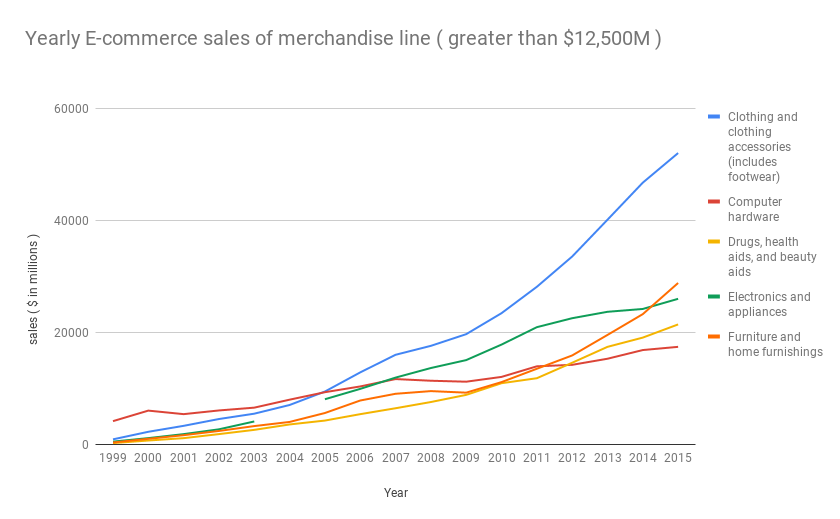
- Consistently growing trend merchandise over the years
- i. Clothing and clothing accessories (includes footwear).
- ii. Electronic and appliances
- Merchandise line (Product category) that are more fluctuating.
- i. Computer hardware.
2. E-commerce sales amount less than $12,500M
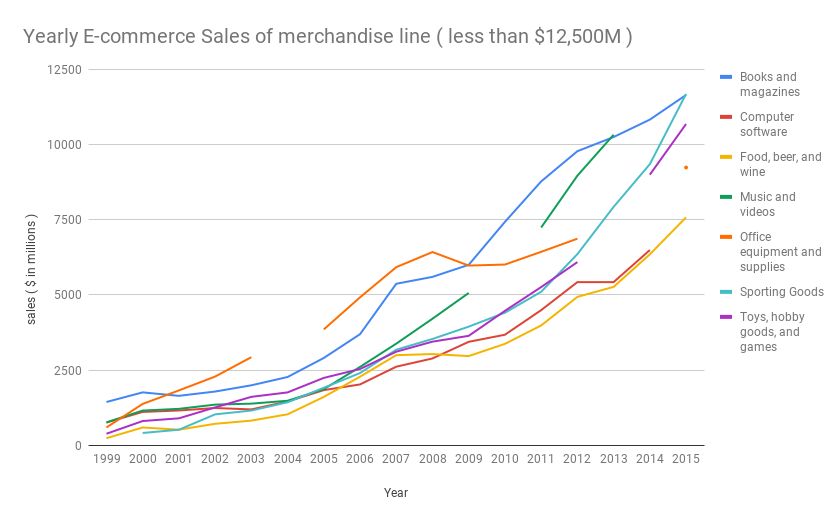
- Consistently growing trend merchandise over the years.
- i. Books and magazines.
- ii. Music and videos.
- Merchandise line (Product category) more fluctuating trends
- i. Office equipment and supplies.
- ii. Food, beer and wine.
Advantages of sales trend analysis by product category (merchandise line)
- Find potential opportunities in the product line where to focus.
- Setting up the product line sales goals.
- Track a particular product line is up trend or down trend.
- To make timely decisions such as to cut prices, advertise more, or discontinue the product.
- Depends on the selling pattern of a product line, accurately stock inventory across channels.
Use cases of trend analysis :
- Study the sales patterns of products, customers, or sales regions, to predict the future.
- Examine expense report claims for evidence of fraudulent claims.
- To find unusual expenses reported over the period that require additional budget.
- Budgeting purposes or to estimate future revenue and expenses.
Point to be consider while predict using trend analysis
- Factors formerly impacting a data point may no longer be doing so to the same extent.
- Extrapolation of a historical time series will not necessarily yield a valid prediction of the future.
- Considerable amount of additional research should accompany trend analysis when using it to make predictions.


